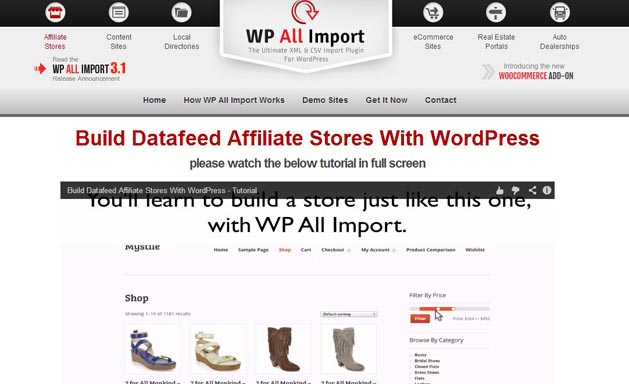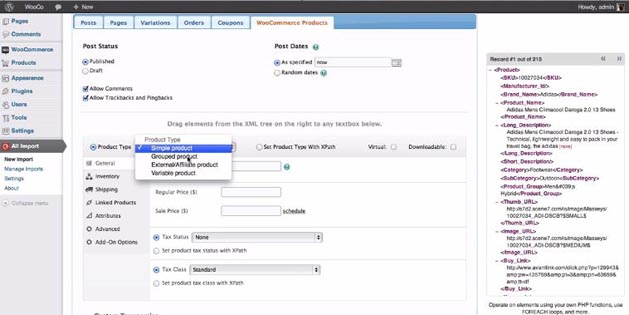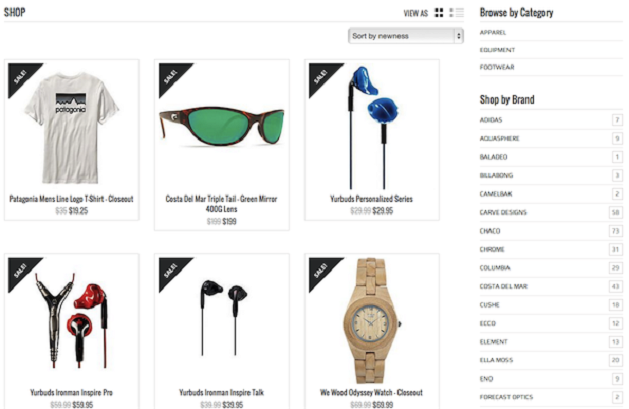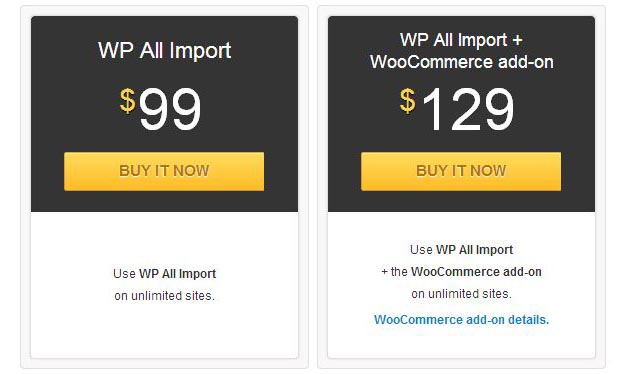Affiliate Marketing Income Report: July 2013
August 2, 2013 Posted by Tyler CruzThis is now my seventh post in this monthly post series, and I’m happy that I’ve been continuing with them.
Aside from being interesting to readers, it’s also a good motivator for me. I now calculate my daily and monthly earnings (gross, net, ROI, etc.) every morning, and run the average to see what I’m on pace to hit for the month. My goal is always to set a new personal best.
Doing these income reports also makes me more accountable, as I feel a bit embarrassed when my campaign earnings drop.
Before I continue – let’s take a quick look at how I predicted July would perform from my previous income report:
"In fact, I don’t think July will just be a lot lower, but actually in the 4 digit net profit range, instead of the mid-5 digits that I have been doing."
Up until now, every single time I predicted that my next month’s earnings would nosedive, I’ve been wrong.
Unfortunately, I was right. July performed far worse than June. The good news is that it did better than the "4-digit net profit range". The bad news is that I only made half the profit in July of what I did in June.
Below are my affiliate marketing numbers (not inclusive of my other revenue sources) for the month of July 2013:
July 2013 Affiliate Campaign Income:
$64,950.00
Man, what a drop from June ($142,606.00 –> $64,950.00). In fact, this is the lowest gross amount I generated all year.
Expenses:
$38,258.85
Traffic Source Breakdown:
- Traffic Source #1: $8,689.31
- Traffic Source #2: $4,464.11
- Traffic Source #3: $100.00
- Traffic Source #4: $2,892.16
- Traffic Source #5: $22,113.27
At least my expenses were the lowest I spent all year…
Net Profit:
$26,691.15
![]() .
.
Talk about a drop. The month before, June, brought in a total of $52,447.17 net profit, so July saw my profit drop nearly exactly in half.
My ROI did jump significantly this month though, from 58% to 70%, but really ROI is pretty meaningless when you’re talking about overall monthly numbers. Net profit is really all that matters.
Year-To-Date Affiliate Marketing Results
2013 has been a fantastic year for me so far, although July really put a damper on things…
Here’s a monthly breakdown:
| Month | Gross | Expense | Net | ROI |
| January 2013 | $74,277.30 | $50,927.39 | $23,349.91 | 46% |
| February 2013 | $103,961.00 | $72,516.36 | $31,444.64 | 43% |
| March 2013 | $83,204.00 | $49,320.34 | $33,883.66 | 69% |
| April 2013 | $98,526.50 | $64,892.30 | $33,634.20 | 52% |
| May 2013 | $104,600.50 | $64,402.12 | $40,198.38 | 62% |
| June 2013 | $142,606.00 | $90,158.83 | $52,447.17 | 58% |
| July 2013 | $64,950.00 | $38,258.85 | $26,691.15 | 70% |
| Total: | $672,125.30 | $430,476.19 | $241,649.11 | 56% |
While July definitely took a major hit (it’s actually my second-worse month this year so far), when I look at the numbers in the table above, it actually doesn’t look so bad. I think it’s partly because my Net column is still all green, and partly because my net column is still all 5-figures.
Net Profit Projections
The following linear projection is based off the past 7 months of data, and is projected for the next 4 months:
As you can see, July certainly messed up my pretty graph. However, even with that noticeable blemish, I am still on a trend to see close to $50,000 net in 4-months time by November.
However, this is based off of only 7 points of data, so it’s still a very loose projection. As time goes on though, the projection will only get more and more accurate, which is pretty cool.
I decided to take things 1 step further and create a graph based on the running net profit total from my campaigns this year so far:
So to date, I’ve made $241,649.11, and this time the projection is set for the end of the year. The linear projection predicts that I’ll finish the year somewhere around the $425,000 net profit mark.
What’s interesting is how the linear projection compares to the way I usually predict numbers, which is by taking the current total average and multiplying that by the total timeframe. When I do that, I get $368,499.36 as the magic number – so around a $50,000 difference.
I personally prefer my usual method, but at the same time it’s interesting to compare the two.
These were just predictions though. I could of course see another 50% drop in my earnings in August and throw all the above data out the window ![]()
July Recap
July was a bit of an interesting month for me. For the first half, I was having major eye issues. It got so bad to the point where I simply couldn’t work anymore. As a result, I missed out on a lot of working hours. It was really scary and annoying.
Fortunately, I got that mostly fixed (hopefully fully fixed soon) and I can see again.
Once I got my sight back, I put in a good effort on my campaigns. I ran 12 or so new offers, and made many campaigns. I didn’t try any new traffic sources though. I also created around 6 or so new landing pages, with very mixed results. I forgot how fun split-testing landing pages can be (once the landing pages are done that is!) as I usually direct link.
I found some great new campaigns, but as luck would have it, they all went down pretty much immediately after I ran them. I’m working on getting them back. I’d say I have a 75% chance of at least 1 of those new offers returning.
I spent a fair bit of money in July on running new campaigns. If I hadn’t, I probably could have netted a little bit over $30,000 for the month, but spending money to try to make more money is what affiliate marketing is all about.
Other than affiliate marketing, I worked hard on tackling my never-ending e-mail inbox. It currently stands at 202 e-mails. I made a ton of progress on that (I was at 609 exactly 1 month ago) so I’m happy with that.
August Plans
For August, my eyes are still set on tackling my e-mails. I only have 202 to get through though, so I’ll definitely and finally get that done. Part of what makes it difficult is that I get 40-45 new e-mail everyday on top of that, so I need to get through 40-45 e-mails per day just to stay even…
After I’m caught up with e-mail (at least 99% of e-mail… there are some that require a lot more time that I put "on hold"), I’ll be 100% focused on finishing my corporate income taxes until they are done.
I’m already so late on them and owe both interest and penalties on them, but I’m very confident I’ll finally have them done and paid for in August.
After all that stuff is done (hopefully!), my goal is to sell at least 1 more website.
Affiliate marketing-wise, I don’t plan on doing too much new with affiliate marketing. I’ll most likely run some new campaigns and stuff, but my priorities lie in getting my e-mails and taxes taken care of.
August Income Predictions
There are so many factors that come into play when it comes to affiliate marketing that it’s really tricky to accurately predict how the month will do – at least for my campaigns.
Unfortunately, I think that I may see another drop again in August – nothing too drastic, but currently it looks like it may be around $15,000 – $20,000 net profit. I certainly hope I’m wrong, as having two declining months in a row is not a good trend.
We’ll just have to wait and see. Check back on September 1st to see the results!
Now – how did July treat you for your affiliate marketing campaigns?
Why Network EPC is Completely Useless
July 25, 2013 Posted by Tyler CruzIn my last blog post, a reader named Dave left the following comment: "I am looking on Neverblue and most of the campaigns have an EPC of like less than 5 cents. No way to make a profit with that. Should those be ignored?"
In a word? Yes.
This question pops up fairly often and is especially common amongst those looking for their first offer. The logical thing to do would be to look for an offer with a high EPC (earning per click), and that is how a lot of newcomers to this industry pick their offers.
But choosing an offer based on its EPC is a huge mistake because (in my opinion) network EPC numbers are completely useless.
I decided to record a 12-minute video explaining exactly why. Check it out below:
(Note: You may need to visit the post directly at TylerCruz.com if you’re reading this via e-mail or RSS in order to see it.)
One thing I didn’t mention in the video as a possible solution to knowing how a good an offer is, is to simply contact your affiliate manager. Ask him or her how the offer is doing on X traffic source and what some of the top guys (and average publisher) on that traffic source are doing in terms of EPC. Be sure to get an idea of if those publishers are doing good volume or not too.
Even with this information though, you can’t judge an offer completely. You have no idea what ads, landing pages, and targeting those other publishers are using. The only real way to know how good an offer is, is to try it yourself!
I hope this answers your question Dave ![]()
THIS is Why You Need to Start Affiliate Marketing
July 21, 2013 Posted by Tyler CruzThis post is meant for those of you who have been on the fence about getting into affiliate marketing. It’s also meant for those of you who may have tried it in the past, but essentially gave up. But not everyone that carries out marketing discovers all its tenets, for Digital Marketing somehow always slips through the crack. And those who give up, certainly haven’t come across Marketing Heaven, for these companies turn the table around.
No, it’s not going to be another long-winded verbal lecture on perseverance and not giving-up. The text message marketing is also a good idea these days as people are on their phones all the time.
Instead, I’m going to try to light a fire under your ass by showing you exactly what happened to me today.
For “Fun”
Today I woke up, made some tea (which is rather unusual for me as I usually drink coffee), and started my stopwatch to track my morning 3-hour work session, just as I do everyday.
I did my usual routine of analyzing and optimizing my previous day’s campaigns and looking at my overall numbers, and then proceeded to tend to my e-mails. One of my e-mails was from one of my affiliate managers announcing a new offer on their network. Just as I always do if the offer piques my interest, I checked it out in more detail to see if it was something I would want to run.
At first, I almost did, but then I decided to run 2 different offers instead, simply because I loved the angle opportunities for them.
Due to the simplicity and speed of launching campaigns, I actually find it kind of fun sometimes, and not work or a chore. In fact, while I was setting them up, I thought to myself how it is almost relaxing (especially the image sourcing part).
This isn’t always the case. Sometimes it’s a real pain to set up a new campaign (landing pages and foreign-language offers can be annoying). But generally, setting up a new campaign is really quite quick and easy to do – and I’m including all tracking and initial split-testing set-up as well.
Anyhow, it probably took me around 30-minutes to set these 2 campaigns up. They were each using offers from different networks, and I set them up on Facebook, direct linking.
5-Minutes Later
5-minutes later, all my ads were approved and now I was just waiting for traffic to start. There is usually a bit of a delay when a new Facebook ad is approved or unpaused. For me, it tends to take between 30-45 minutes.
To this day, I’ve had a 99% ad approval rate. Run legitimate ads and offers, and you should never have a problem.
1-Hour Later
One hour later, I was pumped up. BOTH campaigns had already brought in conversions and were profitable right off the bat.
This is without any optimization or adjustments of any kind.
From that point on, you can be sure that I kept refreshing my stats constantly throughout the day.
Whenever you find a new profitable campaign – no matter what size the campaign is at, it’s always a huge endorphin rush and a real high.
The Results
Okay, so here’s how the campaigns did.
Before I continue, please note that these are essentially “raw” campaigns. That is, they are completely unoptimized and have not been tested (for example, I only used 1 angle per campaign).
They also only ran since around 1-2pm, so approximately half the day.
Taking these things into consideration should show why I was so excited despite these not being the hugest of numbers – there is definite scaling and optimization potential.
Campaign #1
Okay, so this one actually peaked around dinner time and then started to drop off.
This could be due to dayparting or a number of different factors, but here’s how it fared:

It’s definitely not the greatest ROI at first glance, but considering that it’s a “raw” campaign, these are actually awesome!
I mean, if all I did was simply pause 6 of the ads and keep #2 up, my profit on my $245.10 spend would have been $134.90, since the ad performed at a 55% ROI with a decent conversion sample.
That’s a 3-second adjustment right there. See the potential now?
The only issue with this campaign is that the potential reach is not the greatest, but it’s enough to where the campaign should make some decent coin before it potentially fizzles out and needs to be paused (and rejuvenated again later!)
Campaign #2
This second campaign is kind of crazy because it was so casual in how I came about it.
When I saw the campaign, I casually told my AM “Hmmm… that could do well on Facebook”, and didn’t think much of it.
Then this morning, after I had set up Campaign #1 I remembered what I had said about this campaign, and thought to myself “What the hell – it only takes 20-minutes to set up, why not try it?”.
And it’s a good thing I did, because here are the results. First, the Facebook data for this afternoon:

Not the best CTR’s (I’ve NEVER been great at obtaining high CTR’s on Facebook…), but slightly better than the Facebook average of 0.035% – 0.04%.
Where I make up in poor-mediocre CTR though is in the “quality” of my ads, which yield higher conversion rates.
Although, I should mention that earlier in the day, my CTR’s were awesome. Obviously this changes as the sample size increase and due to other factors such as dayparting and Frequency, but it gives me hope that I can improve upon this in the future.
And of course, I only tested 5 ads!
The potential reach on this campaign is a fair bit larger than Campaign #1, so it should last a good while before starting to fizzle out. My targeting on it is also a lot tighter, and can easily be opened up.
Here’s how Campaign #2 fared:

Without ANY optimization, it generated $214.50 profit in less than half a day (from around 1-2pm to 10:30pm). That’s an average of around $24 profit/hour.
The Potential
“Potential” is such an easy word to throw around in affiliate marketing, and although I have only 1 day’s worth of data on a somewhat limited Reach, I do have a good sample size of data already and I do believe that the following is a realistic expectation:
With some basic optimization, Campaign #1 should be able to average at least $50 a day profit. I mean, it did $40 today on its first day with no optimization and only running half a day.
Campaign #2 has even more potential, as I can open up the age range, and some other angles might work on it as well to a degree (although I actually consider each angle to be a separate campaign). Considering that it did $214.50 profit today in 9 hours without any optimization, I think it’s fair to say that this campaign could be averaging $300 a day profit with super basic optimization.
Now, take those two numbers: $50/day and $300/day, and average that over 1 month. That works out to $10,500 a month profit.
The Moral of the Story
These 2 campaigns took me 30-minutes to set up from start to finish, only ran for half the day, and already brought me in over $260 in profit.
With some basic optimization, it is not unreasonable to estimate that these 2 campaigns will yield a monthly profit of $10,500 a month.
Obviously not all campaigns will be successful off the bat. In fact, most won’t. But that’s not the point. The point is how simple it is to actually get a profitable campaign going. You just need to keep at it.
Again, I direct linked, and set up extremely basic and “obvious” campaigns, doing completely 100% whitehat methods as I always do. It’s not rocket science.
Yes, the campaigns could die at any point due to the offers going down, competition (unlikely), and traffic eventually dying out, but the money you make during this time will be more than enough to keep you going to find new profitable campaigns.
Personally, I am still busy with tackling my e-mail inbox (making great progress!) and having to take care of a number of tasks such as getting my corporate taxes done and selling off more of my websites, but once I take care of those things, I’ll definitely be working hard on growing my affiliate marketing income.
My “big” goal now is to hit $100,000 profit a month. I know I can do it – I just gotta keep at it. In July of 2011 I did $0 in affiliate marketing, and last month I did $52,000 profit, so I know it’s possible.
Just like when I used to dream of one day hitting 6-figures gross in a month, I now set my eyes on one day doing 6-figures profit in a month. The difference now is, I actually think it is just a matter of time before I hit that goal, whereas before it was more just a dream.
KEEP AT IT. It’s not rocket science. It’s just perseverance.
You’ll thank me later. In fact, when you’re making 6-figures a month, I expect a nice gift basket from a nice corporate gifting company.
Datafeed Affiliate Stores Made Easy with WP All Import
July 18, 2013 Posted by Michael KwanThe following is a paid review for TylerCruz.com written and reviewed by Michael Kwan. It is completely of Michael Kwan’s opinion and is not influenced by being paid. If you’re interested in having your site or product reviewed, please view my advertising page
You only have so many hours in the day and this can make you feel like there is an inherent limit on your earning potential. There is some truth to that and this is one of the reasons why Internet entrepreneurs in particular are always looking for ways to outsource or to automate some of their business processes. Instead of doing a full manual backup of your website every few days, for example, you may utilize a plug-in or some special code to do it for you.
And the same fundamental philosophy can apply to opening an online store too, especially if you don’t wnat to deal with the complexities of managing your own inventory or handling your own order processing. This is a big reason why affiliate marketing and affiliate stores are so popular, but it can be time-consuming to manually update those sites. And that’s why a utility like WP All Import can save you a lot of time and energy, but it effectively automates your ability to build, open and run your own affiliate store.
What Is WP All Import?
The core idea behind WP All Import is that it can work in tandem with your new or existing WordPress installation. Using the WP All Import WordPress plugin, along with the WooCommerce add-on, you can effectively import XML datafeeds to produce a dynamic affiliate store that is then automatically updated by way of your affiliate datafeed.

It is designed to be the “ultimate affiliate store building solution,” giving you the ability to simply and easily “import external/affiliate products to WooCommerce.” If you are already using and are familiar with WooCommerce, then leveraging that experience will give you a leg-up on building your own affiliate store using this comprehensive solution.
There are many features here that affiliate marketers and e-commerce specialists will appreciate. First, you are not stuck with using certain pre-defined templates for your WP All Import affiliate store. Working in cooperation with WooCommerce, this total solution will work with any WordPress theme. If you like one kind of layout or another, if you want to tweak your design to improve conversions, you can do that.
When you use WooCommerce to build your online store, it also means that you can use the various features that come with WooCommerce too. This means that your sidebar navigation, for example, can feature layered navigation with a hierarchy of pull-down menu options. If you’re selling shoes, you may have a parent category for women’s shoes, a child category below that for boots, and a child category below that for leather boots, for instance.
How Does It Work?
To give you a sense of how you can go about setting up your own affiliate store in a matter of minutes, the folks at WP All Import have put together a brief tutorial video that walks you through some of the major steps. While it may seem a little daunting for novices, the overall process is actually reasonably straightforward.
(Note: You may need to visit the post directly at TylerCruz.com if you’re reading this via e-mail or RSS in order to see the video.)
You can pull in an XML datafeed from your favorite affiliate network, assuming that they offer datafeeds, and this can be imported into the system to automatically update your own online affiliate store. This includes changing not only the product data and pricing, but also the ability to add new products, remove old products, update images and so on. Since it’s updated on their end and automated on your end, you never really have to touch it again. WP All Import will check for changes periodically on its own, so your product listings will always be up to date.
As far as customizing how you want your pages to look and what sort of information should be included, the interface allows for full drag-and-drop functionality.

So, using the above screenshot as an example, we can populate the SKU field by pulling the SKU attribute from the list on the right and dragging it the appropriate field in the main section. You can do the same for product names, product descriptions, product prices, and whatever other attributes your XML datafeed may have. This will vary depending on the affiliate program and datafeed you are using, the fundamental process is essentially the same.
Seeing the Store in Action
To give you a sense of what you can expect when you decide to build your own affiliate store, the folks at WP All Import have put together a number of demo sites. As mentioned, you can use whatever theme you’d like and the layout can be completely customized to suit your particular needs or requirements.

This demo site, for example, is being used to sell a variety of fine clothing and accessories, like t-shirts, sunglasses and earphones delivered by local drop-ship shirt fulfillment services. All the information being displayed is being automatically imported from the associated XML datafeed. This includes the product images, names and prices. You can aslo see how the sidebar can be customized with various widgets.
How Much Does It Cost?
The current promotional price for the complete package, which includes both WP All Import and the WooCommerce add-on is $129. You can also buy WP All Import on its own for $99, but the bundle is definitely the better value.

That being said, there is a special coupon code for readers of TylerCruz.com. If you go to the WP All Import main page, hit the “Add To Cart” button near the bottom, and enter “cruz” in the coupon code area, you’ll bring the price down to just $109.65. Payment is accepted via PayPal. Once payment has been received, you’ll receive an e-mail message with your username, password, and access to the customer portal where you can download the plugin, and access the associated documentation and tutorials.


